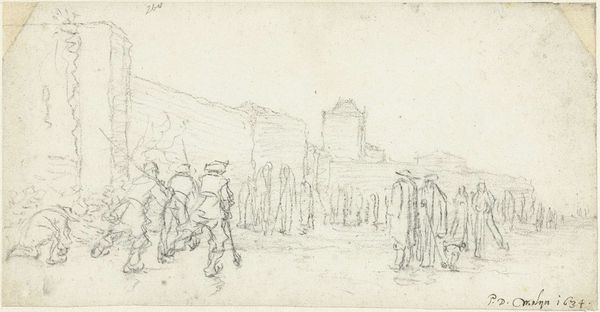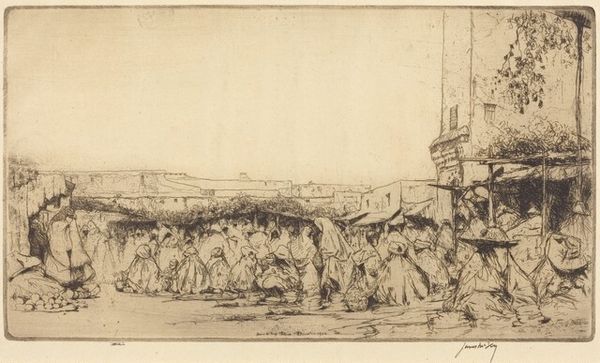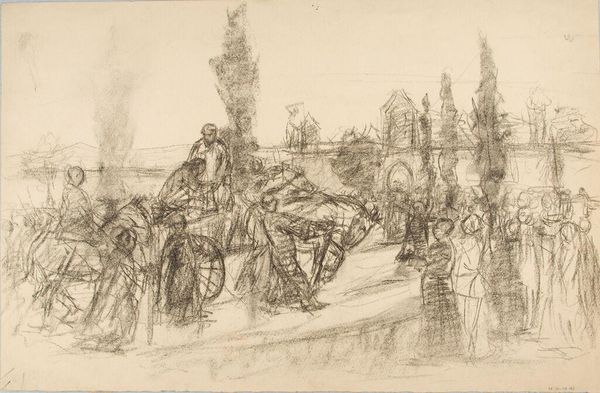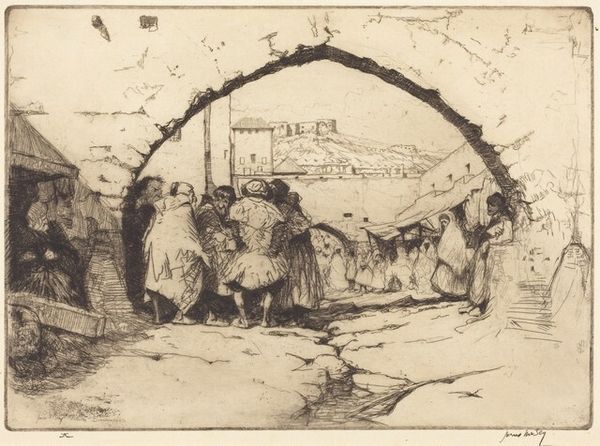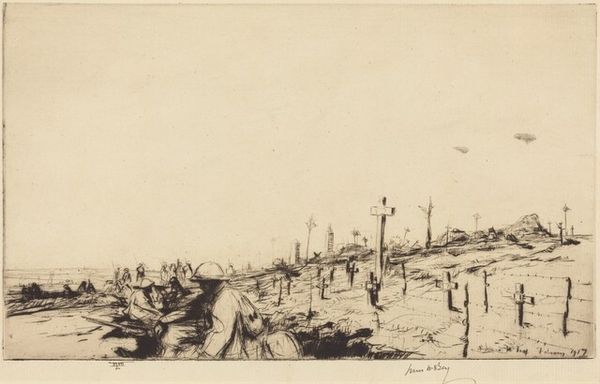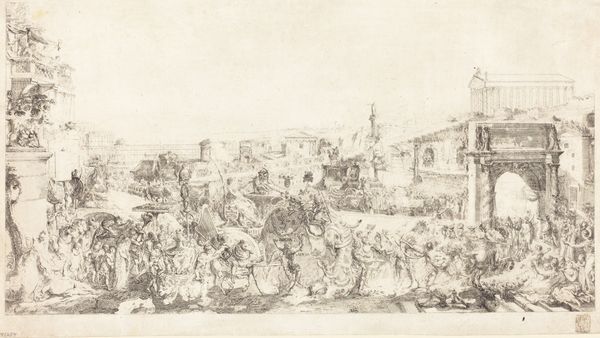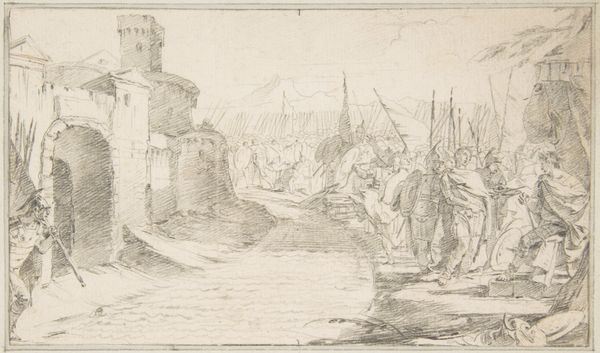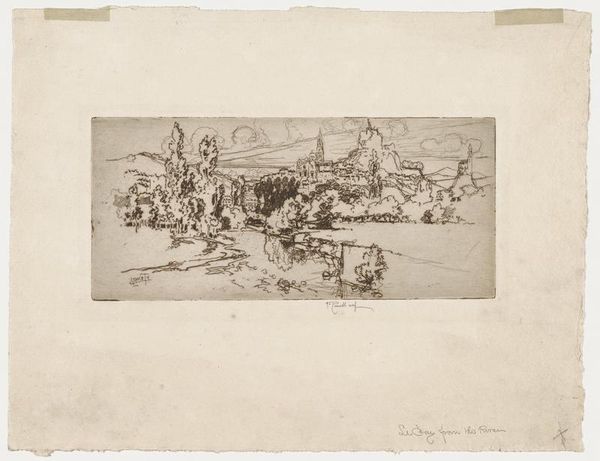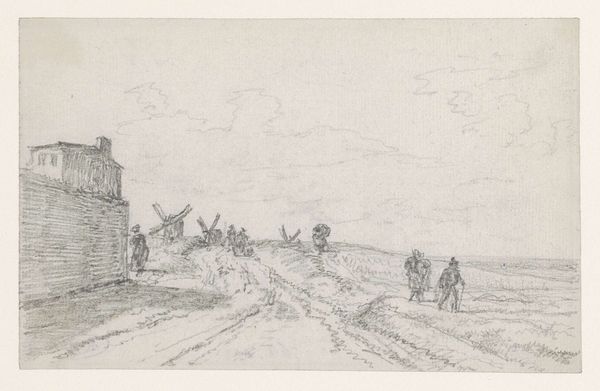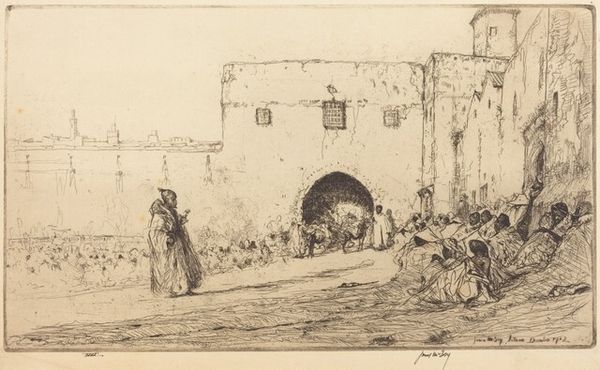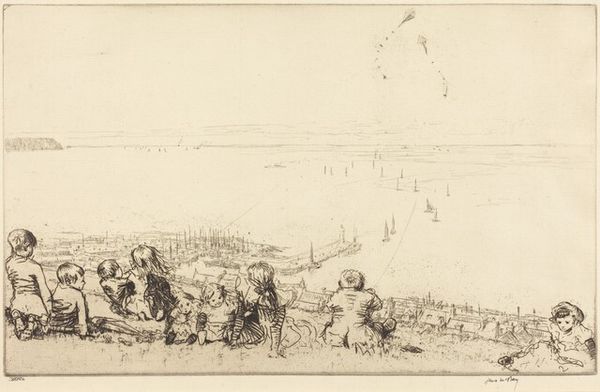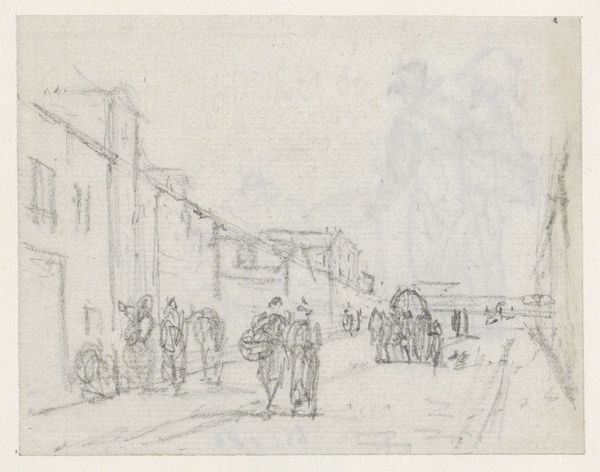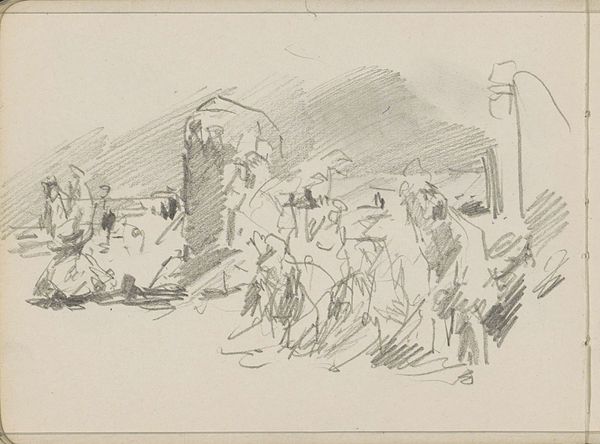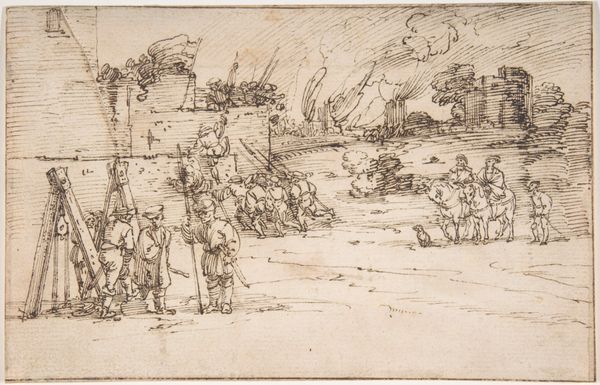
drawing, print, etching, ink
#
drawing
#
ink drawing
# print
#
etching
#
landscape
#
ink
#
history-painting
#
realism
Copyright: National Gallery of Art: CC0 1.0
Curator: What an evocative image. This is James McBey’s 1920 print, “Gaza - Prisoners of War," an etching in ink that vividly captures a somber moment. What are your initial thoughts? Editor: The scene appears so fragile, almost ghostly, like a faded memory etched in the very paper. The delicate lines create a stark landscape that draws the eye toward the figures huddled in the center. Curator: Indeed. McBey, as a war artist during World War I, provides us with more than just a visual document. Consider the socio-political context of the piece: it shows captured soldiers likely in the aftermath of battle in Gaza, and the landscape bears witness to that destruction. The very act of depicting these prisoners raises questions about how conflict shapes individual lives and collective identity. Editor: Agreed. I see the composition mirroring the feeling of despair. The towering architectural ruins juxtaposed with the vulnerable, almost dissolving forms of the prisoners evokes a profound sense of loss. The lack of a clear focal point diffuses the tension across the scene, emphasizing the totality of destruction. Curator: Precisely, and technically, the use of etching allows for great detail in portraying the desolation—observe the strategic light and shadow used to depict the fatigue and resignation in their stances, highlighting the brutal reality of war that impacted British sensibilities so powerfully. Editor: While McBey masterfully utilizes line and shade to render a palpable atmosphere, I am interested in the symbolism. The ruins could symbolize not just physical destruction but also the collapse of societal structures and values under the weight of war. The marching line of prisoners creates a disturbing rhythm across the work as if their lives and futures have been utterly consumed. Curator: The placement of figures emphasizes their loss of agency within larger events. Furthermore, his work influenced subsequent depictions of warfare, prompting us to examine our contemporary views on the consequences of armed conflicts and the ethical dilemmas they present. Editor: Overall, “Gaza – Prisoners of War” remains a profoundly disturbing portrayal of wartime suffering that still makes us question the physical, emotional, and societal impact of conflict a century later. Curator: It is a stark reminder that even within visual art's aesthetic structures, historical events inevitably carve enduring patterns and interpretations across humanity.
Comments
No comments
Be the first to comment and join the conversation on the ultimate creative platform.
